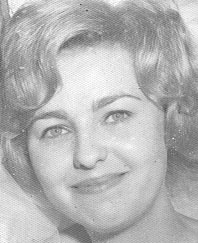
Father Jacques Marquette S.J., sometimes known as Père Marquette or James Marquette, was a French Jesuit missionary who founded Michigan's first European settlement, Sault Ste. Marie, and later founded St. Ignace, Michigan. In 1673, Father Marquette and Louis Jolliet were the first Europeans to explore and map the northern portion of the Mississippi River Valley.
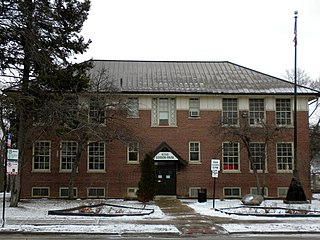
Edison Park is one of the 77 community areas of Chicago, in North Side, Chicago, Illinois.

Fort Sheridan in IL is a residential neighborhood spread among Lake Forest, Highwood, and Highland Park in Lake County, Illinois, United States. It was originally established as Fort Sheridan, a United States Army Post named after Civil War Cavalry General Philip Sheridan, to honor his services to Chicago.
The Chicago Daily News was an afternoon daily newspaper in the midwestern United States, published between 1876 and 1978 in Chicago, Illinois.

The Chicago Portage is a water gap, and in the past a sometime wind-gap portage, connecting the watersheds (BrE: drainage basins) and the navigable waterways of the Mississippi River and the Great Lakes. It cuts through the Valparaiso and Tinley Moraines, crossing the Saint Lawrence River Divide that separates the Great Lakes and Gulf of St. Lawrence watersheds from the Gulf of Mexico watershed, making it one of the most strategic points in the interior of the North American continent. The saddle point of the gap is within the city of Chicago, and the Chicago Portage is a reason Chicago exists and has developed to become the important city that it is, ranking 7th in the world in the 2014 Global Cities Index. The official flag of the city of Chicago includes four red stars symbolizing city history, separating two blue stripes symbolizing the waters that meet at the city.

Alexander Arrasi Agase was an American football guard and linebacker who was named an All-American three times in college and played on three Cleveland Browns championship teams before becoming head football coach at Northwestern University and Purdue University.
James Westfall Thompson (1869–1941) was an American historian specializing in the history of medieval and early modern Europe, particularly of the Holy Roman Empire and France. He also made noteworthy contributions to the history of literacy, libraries and the book trade in the Middle Ages.

Illinois's 3rd congressional district includes part of Cook County, and has been represented by Democrat Dan Lipinski since January 2005. The district was previously represented by his father Bill Lipinski beginning in 1983.
Joseph Bailly was a fur trader and a member of an important French Canadian family that included his uncle, Charles-François Bailly de Messein.
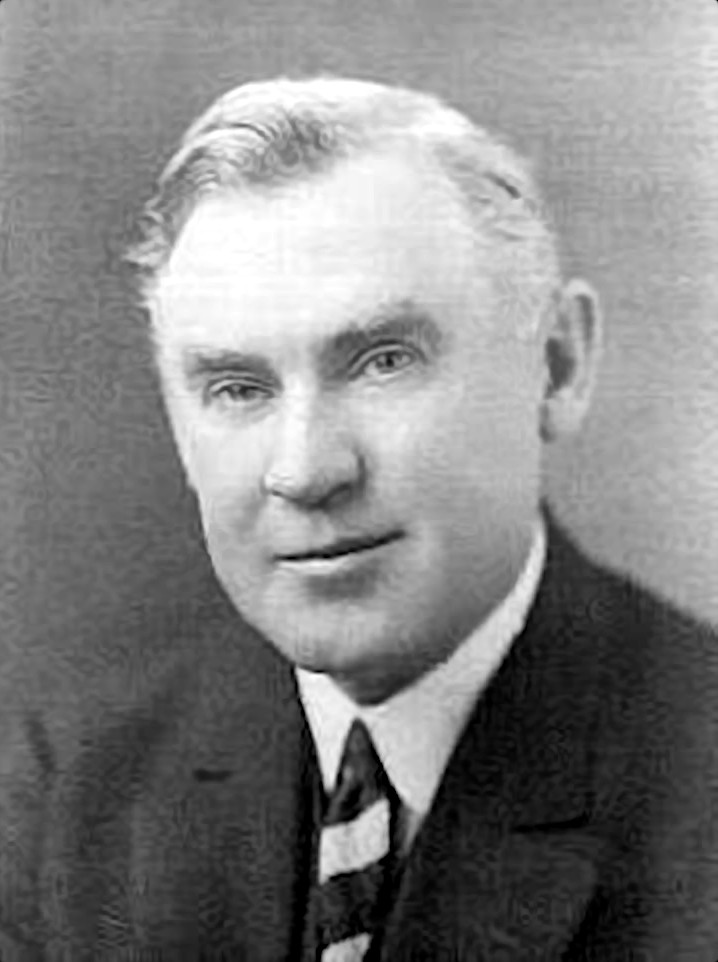
George Washington Maher was an American architect during the first-quarter of the 20th century. He is considered part of the Prairie School-style and was known for blending traditional architecture with the Arts & Crafts-style.
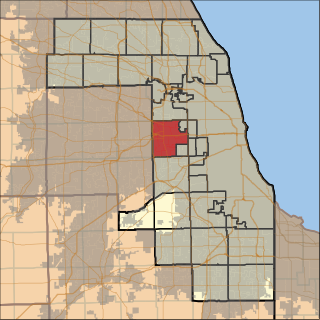
Proviso Township is one of 29 townships in Cook County, Illinois, United States. As of the 2010 census, its population was 151,704. It was organized in 1850 and originally named "Taylor", but shortly afterward its name was changed to make reference to the Wilmot Proviso, a contemporary piece of legislation intended to stop the spread of slavery.

James Henry Jones was an American jazz pianist and arranger.

The McCormick family of Chicago and Virginia is an American family of Scots-Irish descent that attained prominence and fortune starting with the invention of the McCormick Reaper a machine that revolutionized agriculture, helped break the bonds of slavery, and established the modern grain trade by beginning the mechanization of the harvesting of grain. Through the McCormick Harvesting Machine Company and later, the International Harvester Company and other investments, the McCormicks became one of the wealthiest families in America. The name became ubiquitous in agriculture starting in the 19th century and the press dubbed the McCormicks the "Reaper Kings". Later generations expanded into media and publishing, finance, and real estate. Various family members were well known as civic leaders. They are descended from an influential leader of modern agriculture, inventor Robert McCormick Jr. (1780–1846), and Mary Ann "Polly" Hall of Steeles Tavern, Virginia.

Colonel Edmund Dick Taylor was an American businessman, politician, and soldier from Illinois. He is remembered as the first person to suggest that the United States should issue paper currency ("greenbacks") during the American Civil War.
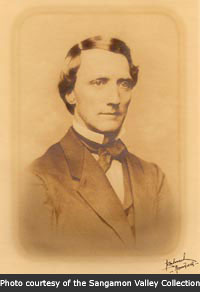
John Whitfield Bunn was an American corporate leader, financier, industrialist, and personal friend of Abraham Lincoln, whose work and leadership involved a broad range of institutions ranging from Midwestern railroads, international finance, and Republican Party politics, to corporate consultation, globally significant manufacturing, and the various American stock exchanges. He was of great historical importance in the commercial, civic, political, and industrial development and growth of the state of Illinois and the American Midwest, during both the nineteenth century and the twentieth century. John Whitfield Bunn was born June 21, 1831, in Hunterdon County, New Jersey. Although every one of the business institutions co-founded or built by the Bunn Brothers has ceased to exist, and fallen purely into the realm of history, each of these businesses left an important legacy of honorable industrial, commercial, and civic vision for Illinois, the Midwest, and the United States.

Tammy Tell Me True is a 1961 American Eastmancolor comedy film directed by Harry Keller and starring Sandra Dee and John Gavin, Charles Drake, Virginia Grey and Julia Meade.

Leverett Samuel Lyon was an American economist, lawyer and business executive, known for his works on education, government, marketing, and economic life, and particularly on the National Recovery Administration.
